Abstract
1 A group of 114 patients on long-term anticoagulant therapy was studied. The daily maintenance dose of both phenprocoumon, bishydroxycoumarin and warfarin was found to be significantly lower in patients aged between 61 and 70 years than in the those between 50 and 60 years of age. The mean daily dose of bishydroxycoumarin, hower, when expressed on a weight basis, was not significantly lower in the elderly. 2 For bishydroxycoumarin but not for phenprocoumon and warfarin there was found a statistically significant correlation between the daily maintenance dose and the weight of the patient. 3 The mean daily dose of both bishydroxycoumarin and warfarin was 30-40% lower than that recommended in the literature. 4 'Correction' was made for potential drug interference by excluding patients in continuous medication with order drugs known to influence the treatment with orally administered anticoagulants. The interindividual variation in dosage requirements of coumarin drug was thereby reduced in the age groups above 60 years. 5 The level of vitamin-k dependent coagulation factors, measured by Owren's 'P and P' method (PP%) was significantly lower (P less than 0.001) in patients of advanced age (between 61 and 70 years) than in younger patients (between 50 and 60 years). 6 The plasma concentration of albumin was significantly lower in patients over 60 years than in those under that age. 7 Correlation (P less than 0.01) was found between the daily maintenance dose of phenprocoumon and the plasma concentraction of albumin.
Full text
PDF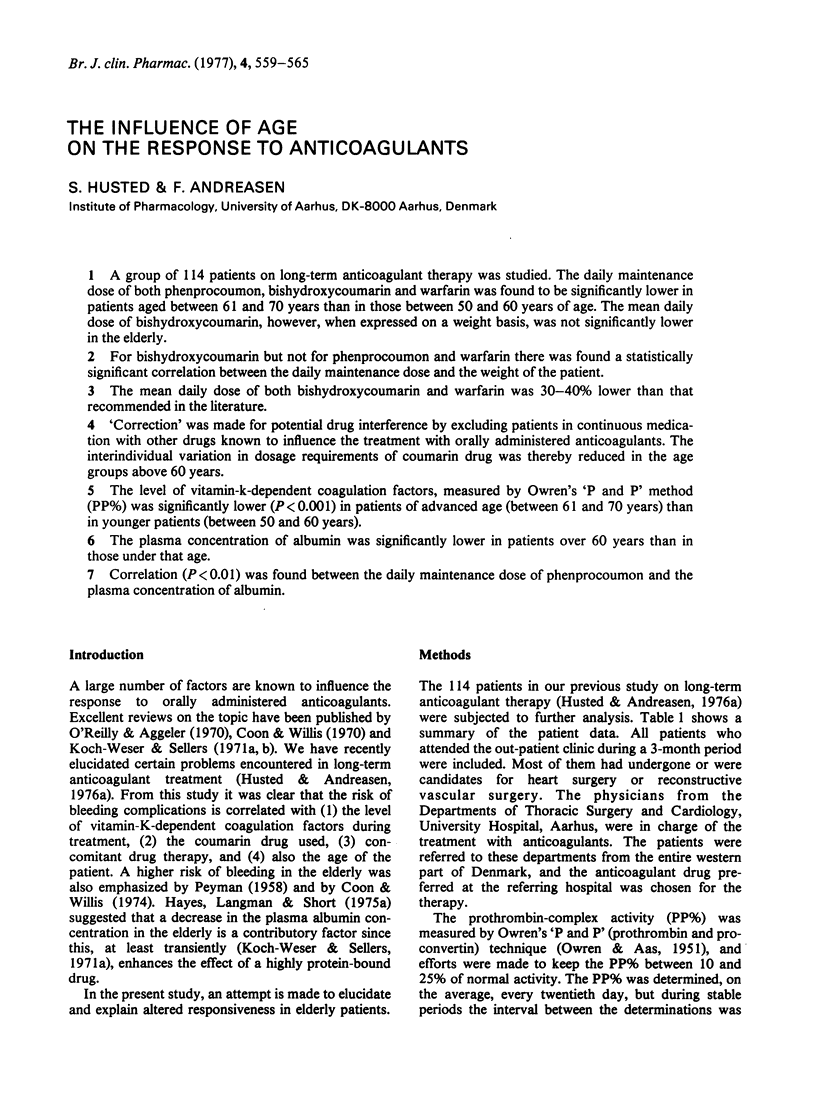
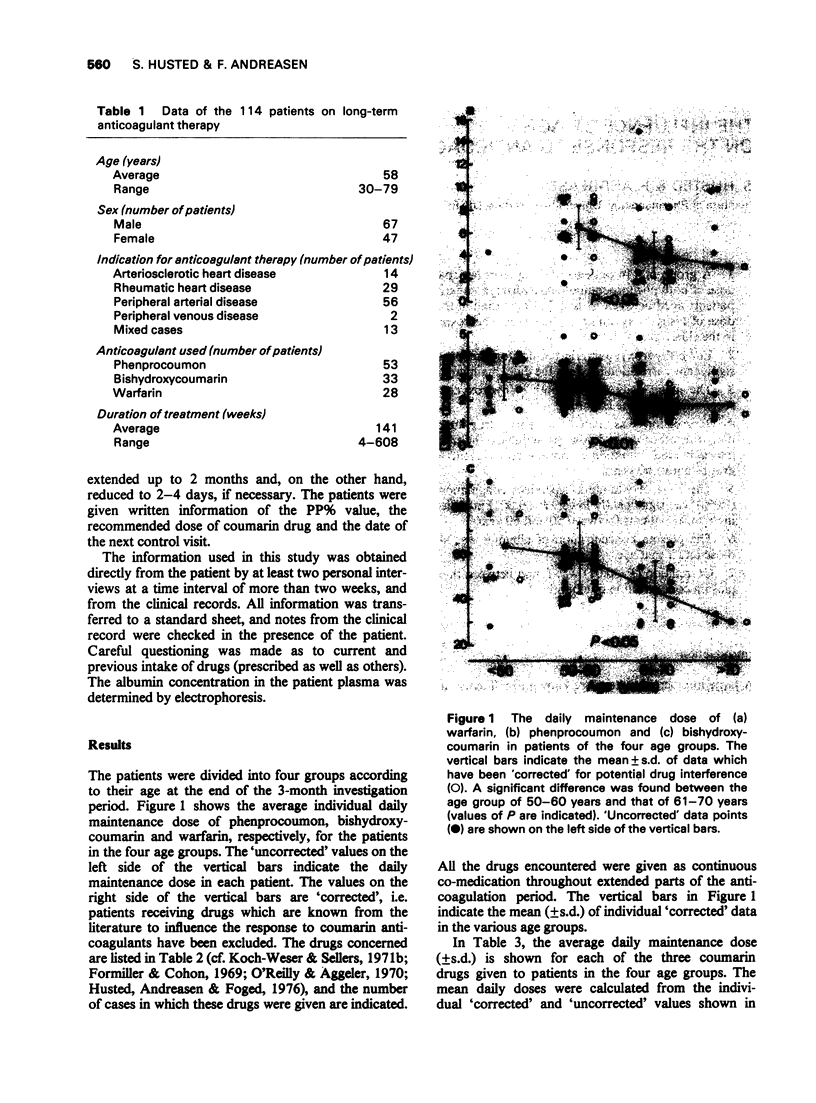
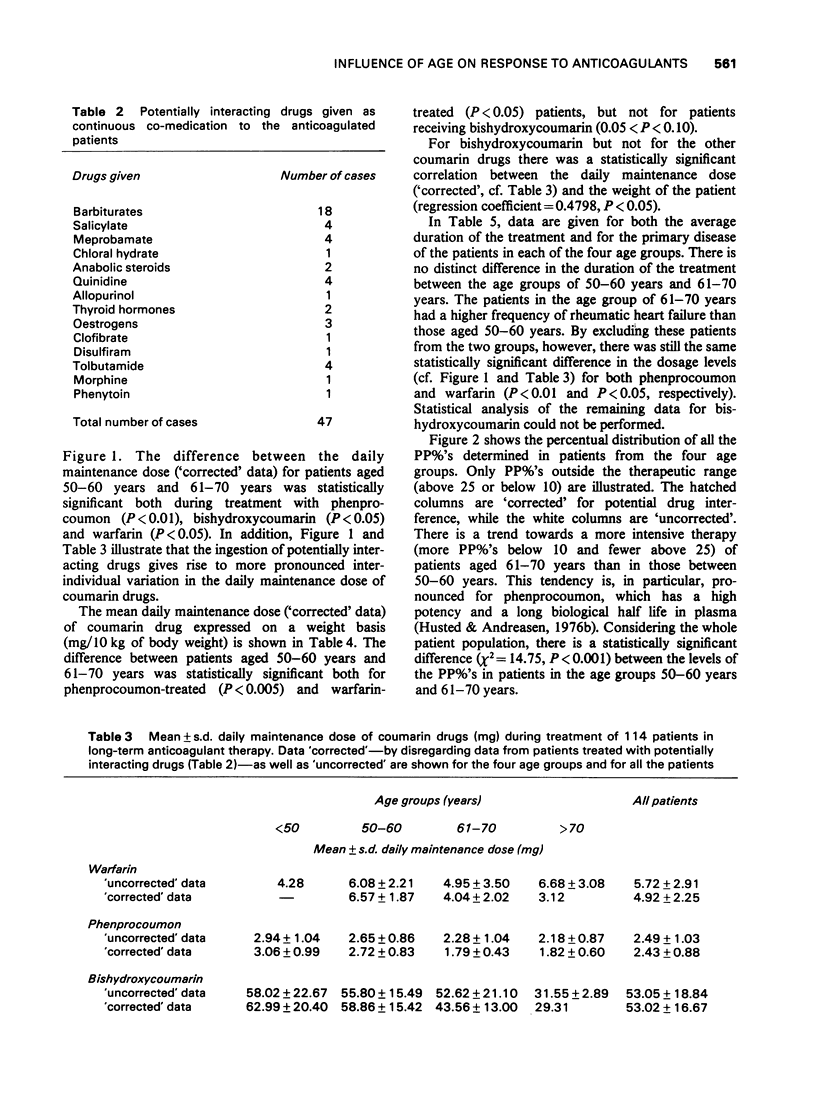
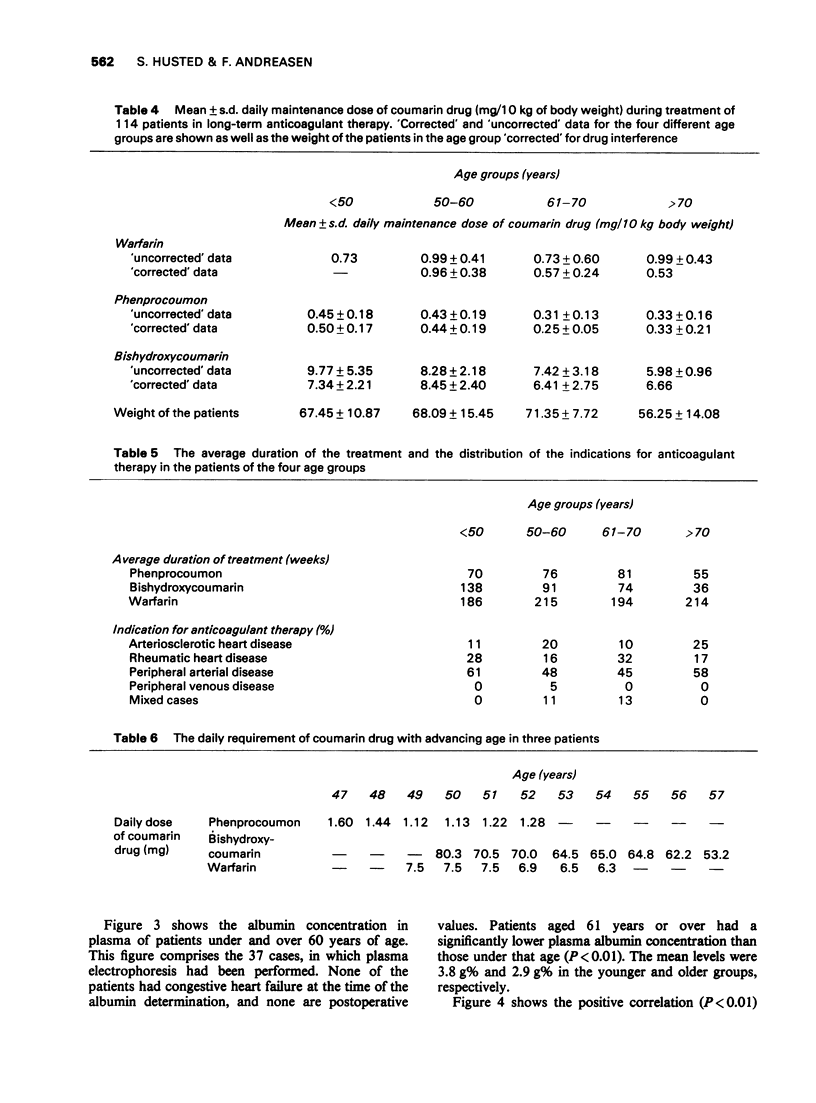
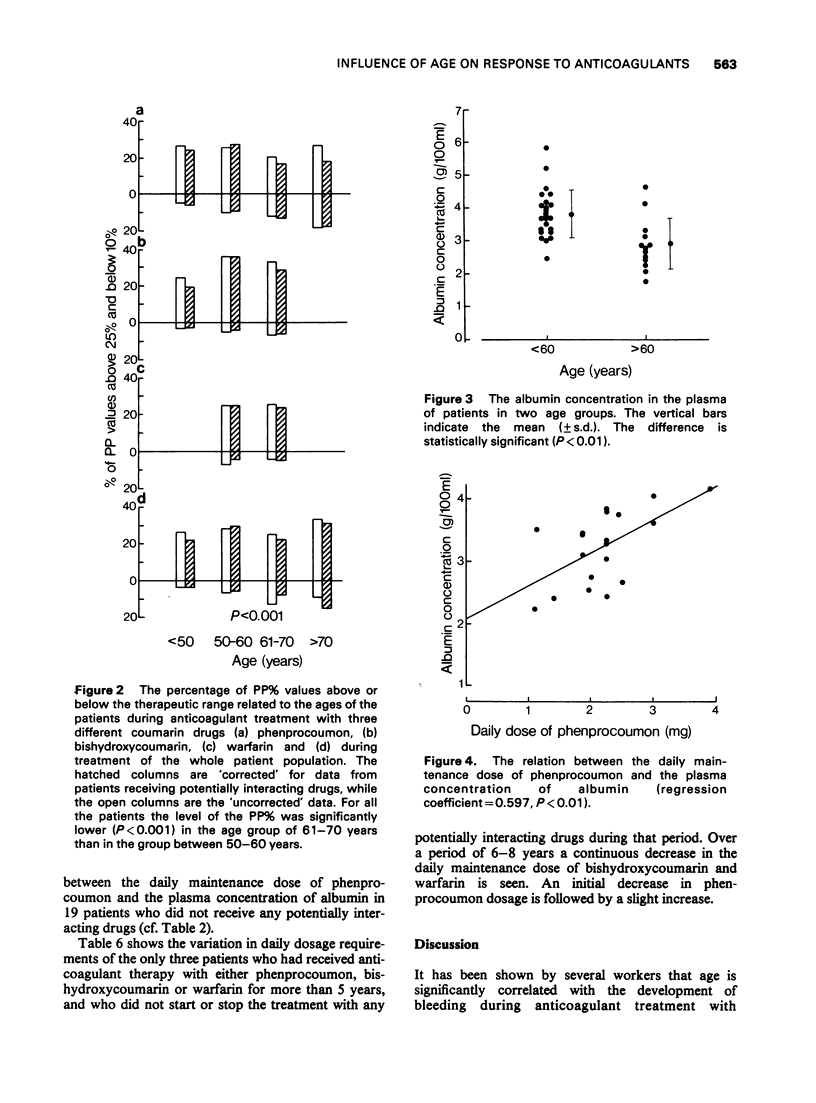
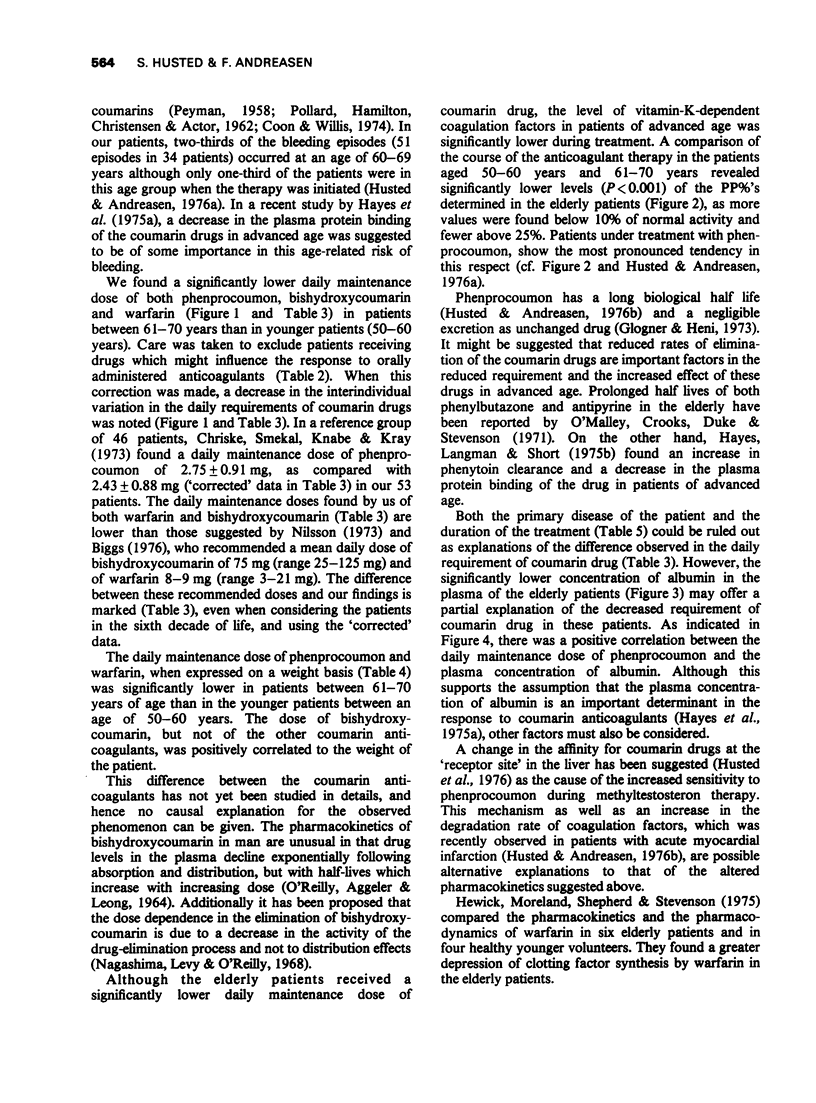
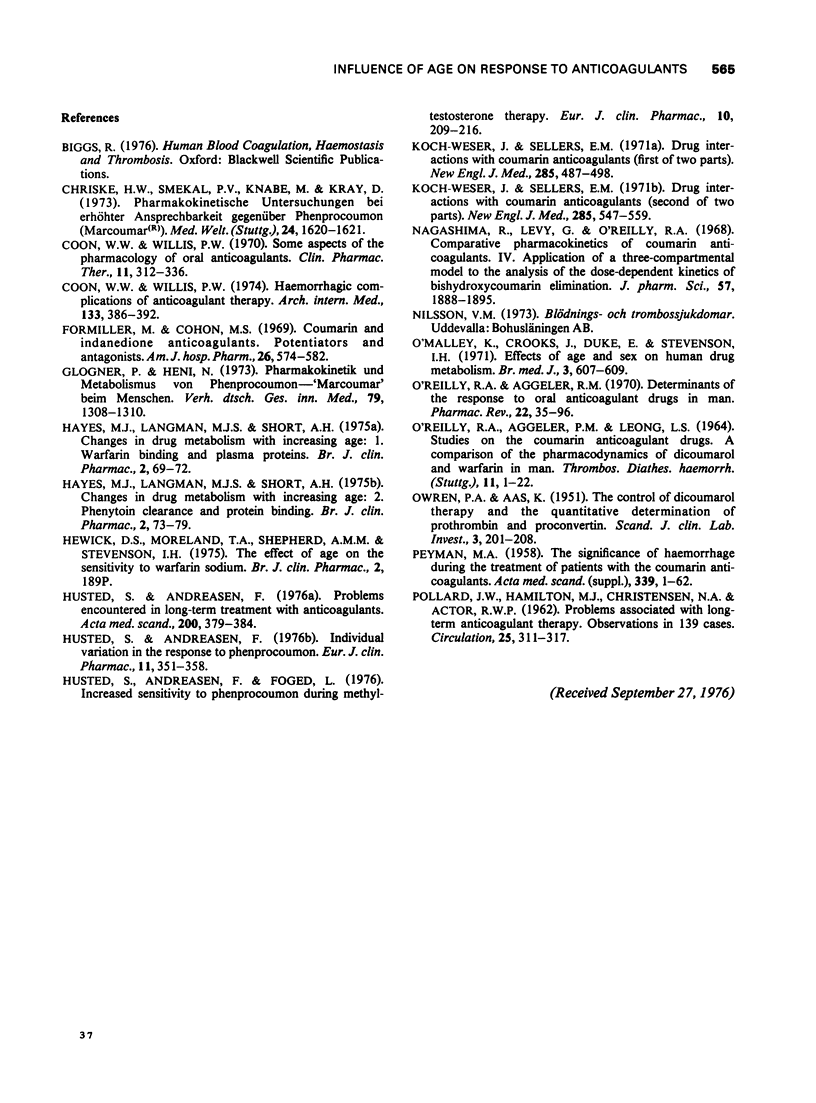
Selected References
These references are in PubMed. This may not be the complete list of references from this article.
- Chriske H. W., von Smekal P., Knabe M., Kray D. Pharmakokinetische Untersuchungen bei erhöhter Ansprechbarkeit gegenüber Phenprocoumon (Marcumar. Med Welt. 1973 Oct 19;24(42):1620–1621. [PubMed] [Google Scholar]
- Coon W. W., Willis P. W., 3rd Hemorrhagic complications of anticoagulant therapy. Arch Intern Med. 1974 Mar;133(3):386–392. [PubMed] [Google Scholar]
- Coon W. W., Willis P. W., 3rd Some aspects of the pharmacology of oral anticoagulants. Clin Pharmacol Ther. 1970 May-Jun;11(3):312–336. doi: 10.1002/cpt1970113312. [DOI] [PubMed] [Google Scholar]
- Formiller M., Cohon M. S. Coumarin and indandione anticoagulants. Potentiators and antagonists. Am J Hosp Pharm. 1969 Oct;26(10):574–582. [PubMed] [Google Scholar]
- Glogner P., Heni N. Pharmakokinetik und Metabolismus von Phenprocoumon--"Marcumar" beim Menschen. Verh Dtsch Ges Inn Med. 1973;79:1308–1311. [PubMed] [Google Scholar]
- Hayes M. J., Langman M. J., Short A. H. Changes in drug metabolism with increasing age: 1. warfarin binding and plasma proteins. Br J Clin Pharmacol. 1975 Feb;2(1):69–72. doi: 10.1111/j.1365-2125.1975.tb00474.x. [DOI] [PMC free article] [PubMed] [Google Scholar]
- Hayes M. J., Langman M. J., Short A. H. Changes in drug metabolism with increasing age: 2. phenytoin clearance and protein binding. Br J Clin Pharmacol. 1975 Feb;2(1):73–79. doi: 10.1111/j.1365-2125.1975.tb00475.x. [DOI] [PMC free article] [PubMed] [Google Scholar]
- Husted S., Andreasen F. Individual variation in the response to phenprocoumon. Eur J Clin Pharmacol. 1977;11(5):351–358. doi: 10.1007/BF00566532. [DOI] [PubMed] [Google Scholar]
- Husted S., Andreasen F. Problems encountered in long-term treatment with anticoagulants. Acta Med Scand. 1976;200(5):379–384. doi: 10.1111/j.0954-6820.1976.tb08250.x. [DOI] [PubMed] [Google Scholar]
- Nagashima R., Levy G., O'Reilly R. A. Comparative pharmacokinetics of coumarin anticoagulants. IV. Application of a three-compartmental model to the analysis of the dose-dependent kinetics of bishydroxycoumarin elimination. J Pharm Sci. 1968 Nov;57(11):1888–1895. doi: 10.1002/jps.2600571113. [DOI] [PubMed] [Google Scholar]
- O'Malley K., Crooks J., Duke E., Stevenson I. H. Effect of age and sex on human drug metabolism. Br Med J. 1971 Sep 11;3(5775):607–609. doi: 10.1136/bmj.3.5775.607. [DOI] [PMC free article] [PubMed] [Google Scholar]
- O'REILLY R. A., AGGELER P. M., LEONG L. S. STUDIES ON THE COUMARIN ANTICOAGULANT DRUGS: A COMPARISON OF THE PHARMACODYNAMICS OF DICUMAROL AND WARFARIN IN MAN. Thromb Diath Haemorrh. 1964 Apr 15;11:1–22. [PubMed] [Google Scholar]
- O'Reilly R. A., Aggeler P. M. Determinants of the response to oral anticoagulant drugs in man. Pharmacol Rev. 1970 Mar;22(1):35–96. [PubMed] [Google Scholar]
- OWREN P. A., AAS K. The control of dicumarol therapy and the quantitative determination of prothrombin and proconvertin. Scand J Clin Lab Invest. 1951;3(3):201–208. doi: 10.3109/00365515109060600. [DOI] [PubMed] [Google Scholar]
- PEYMAN M. A. The significance of haemorrhage during the treatment of patients with the coumarin anticoagulants. Acta Med Scand Suppl. 1958;339:1–62. doi: 10.1111/j.0954-6820.1958.tb17330.x. [DOI] [PubMed] [Google Scholar]
- POLLARD J. W., HAMILTON M. J., CHRISTENSEN N. A., ACHOR R. W. Problems associated with long-term anticoagulant therapy. Observations in 139 cases. Circulation. 1962 Feb;25:311–317. doi: 10.1161/01.cir.25.2.311. [DOI] [PubMed] [Google Scholar]
- Weser J. K., Sellers E. Drug interactions with coumarin anticoagulants. 2. N Engl J Med. 1971 Sep 2;285(10):547–558. doi: 10.1056/NEJM197109022851005. [DOI] [PubMed] [Google Scholar]


